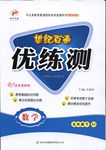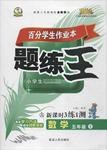One morning, Wu Li discovered that her classroom
had changed. She found that the desks were no longer in rows(排), but pushed together to make eight bigger desks. She
was too excited about it for the first two days and she couldn’t listen to the
teachers carefully. But soon she and her classmates got used to this new
classroom arrangement (安排). “Now our class is quieter,” said Wu. “What’s
more, we can come up with our own ideas and learn more through discussion. It’s
a better way to study.”
Li Yu liked it, too. He said, “Group members first
discuss, and then show ourselves in front of the whole class. It makes us
believe in ourselves.” It was part of a reform (改革) at
Li’s school—Baita Secondary School. The school made this reform because they
wanted to provide students with easier ways to study and more chances to
discuss. “Our school hopes it can improve students’ abilities (能力) to study by themselves and work in groups,” said
Zhang Yong, the principal of the school.
However, the reform has demanded (要求) more from teachers. Now they have only about 15
minutes to give the lesson which should be taught in 45 minutes before. It is
difficult to teach in such a short time. The teachers have to find better ways
to teach more effectively.
“The reform demands more, but I’m sure it is helpful,”
added Mr Zhang.
1.After
the new classroom arrangement it was easier for Wu Li and her classmates to
______ in class.
A. discuss with each
other B.
sit in the classroom
C. push desks
together
D. teach a lesson
2.The
school made the reform to provide students with _______ to study.
A. noisier classes B.
easier ways C. more seats D.
fewer chances
3.The
Chinese meaning of the word “effectively” in this passage is _________.
A.简单地
B.
明确地 C. 有效地 D.
认真地
4.The
teachers __________ after the reform.
A. have to find better ways to teach
B. find it easier to teach
C. spend 45 minutes explaining to the students
D. are happy to explain for only 15 minutes
5.The
best title of this passage may be “________”.
A. Students’ Friendship B. Teachers’ Hope
C. Discussion in Class D.
New Look in Class

 世纪百通主体课堂小学课时同步达标系列答案
世纪百通主体课堂小学课时同步达标系列答案 世纪百通优练测系列答案
世纪百通优练测系列答案 百分学生作业本题练王系列答案
百分学生作业本题练王系列答案
 世纪百通主体课堂小学课时同步达标系列答案
世纪百通主体课堂小学课时同步达标系列答案 世纪百通优练测系列答案
世纪百通优练测系列答案 百分学生作业本题练王系列答案
百分学生作业本题练王系列答案